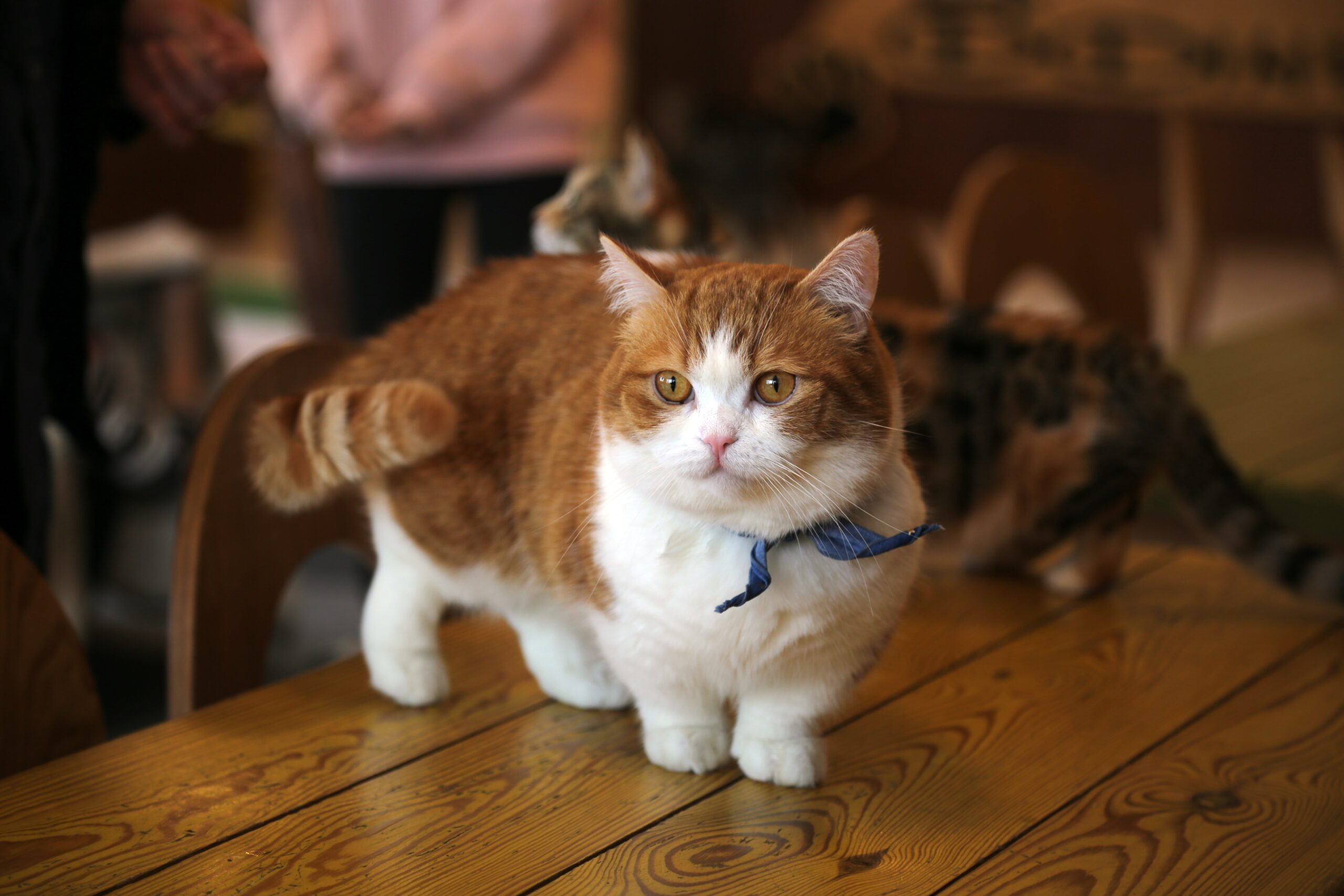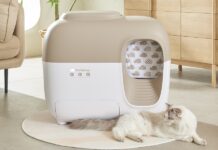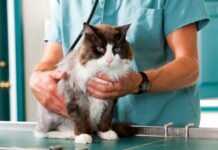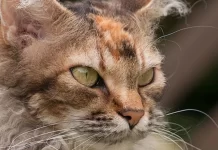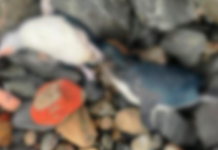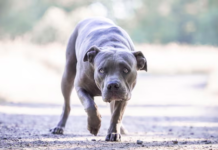Last Updated on August 25, 2023 by Fumipets
The Enigmatic Munchkin Cat.
The Munchkin cat, known for its distinctive short legs, has captured the hearts of cat enthusiasts worldwide. Despite its unique appearance, this breed is defined by much more than its leg length. Let’s delve into the world of Munchkin cats and uncover their intriguing characteristics in this summary.
Munchkin cats are swift, vivacious, playful, and loving. With their distinctive appearance and devoted nature, they more than make up for their short legs.
The Munchkin is really short, as you would have inferred from her name. She is truly exceptional among dwarf cat breeds since, apart from their little legs, this tiny feline actually complies with all the other dimensions of an adult cat. Not familiar with a Munchkin? That’s probable because they’re very new; in the early 2000s, The International Cat Association recognized them as a distinct breed.
These cats are exceedingly uncommon as a consequence of genetic mutation and a fairly difficult breeding procedure. If you’re wondering how much a Munchkin cat costs, depending on pedigree, you may anticipate spending anywhere from $500 to $1200.
Appearance
Most cat lovers either adore or loathe Munchkin cats’ distinctive appearance. With legs that are roughly 3 inches shorter than the typical cat, these little critters are conspicuously low to the earth. The Munchkin’s remainder of the body is quite typical of your everyday house cat, with most adults weighing between 6 and 9 pounds. The Munchkin is sometimes referred to as the Dachshund of the cat world based on appearance. Some people even call the Munchkin a “sausage cat,” a moniker reminiscent of the well-known “wiener dog.”
The Munchkin’s distinctive trait is its small limbs, which result from a spontaneous genetic mutation. Munchkin cats may have short coats, long coats, or no fur at all, and they come in many color combinations and coat patterns. Long-haired Munchkins have silky smooth fur, whereas short-haired Munchkins have soft medium-density coats. Tabby, calico, gray, and pure black are common coat colors and patterns.
A crucial point: The Munchkin cat is not a smaller imitation of another cat breed, despite coming in a variety of colors.
Temperament
Munchkins are playful, sociable cats who often get along with kids and other animals. These inquisitive kittens like learning about their surroundings, and they will even sit on their hind legs like a rabbit to gain a better perspective.
These cats have a reputation for maintaining a playful, kittenlike demeanor far into maturity. These adorable cats like cuddling with their owners when they aren’t playing with toys or dashing about. Munchkins are gregarious, smart, and confident cats that like spending time with their owners.
Munchkins are reputed to be self-assured extroverts, according to Marilyn Krieger, a licensed cat behaviorist. “Generally speaking, they are energetic, eager to interact with others, and like playing and exploring. They are observant of their surroundings and look at everything.
According to Krieger, Munchkin cats exhibit hoarding habits like those of magpies. They enjoy storing aside their “favorite” items to play with later. Your toddler could be to fault if your jewelery disappears.
Munchkins, despite their little size, like running and jumping. Encourage interactive play with other dogs and cats, cat tree play, and feather toys.
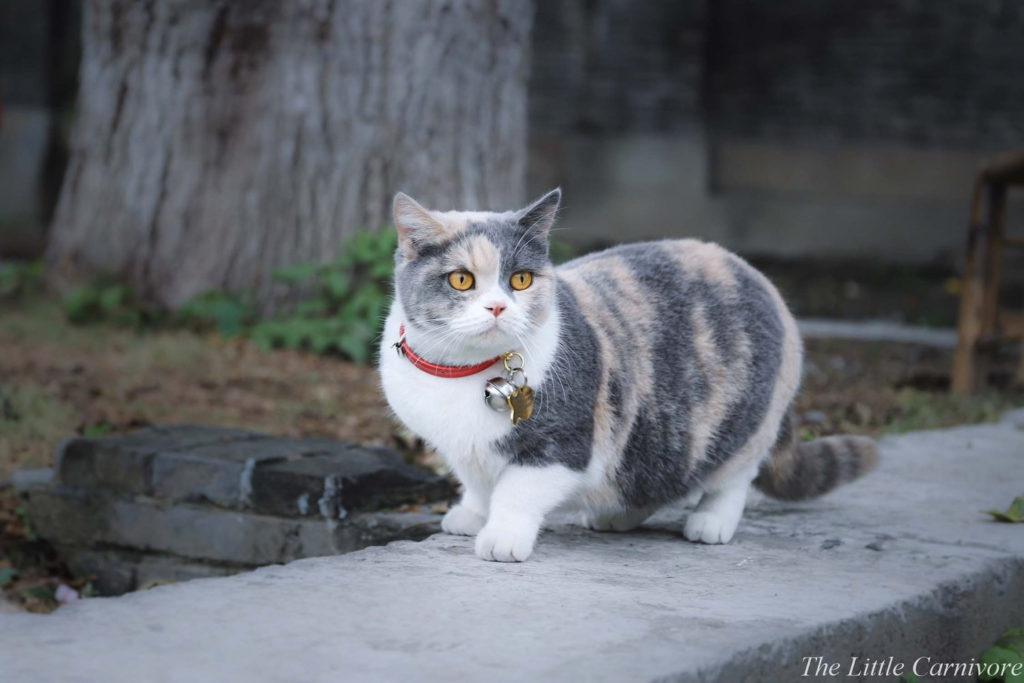
Living Needs
The majority of indoor living arrangements are suitable for the Munchkin cat, provided she has room to play and run about.
They are quite lively and active, according to Krieger. They like playing both alone themselves and with other people, and they usually dash about the home quite quickly.
This vivacious cat can maneuver through tight bends with accuracy and enjoys building up significant speed on her little legs. She will still like leaping and climbing even if she can’t leap to the top of a bookcase in one bound.
A low entry point cat tree is a terrific method to make it simple for your munchkin to explore heights. They are just as adept at climbing as other cat species, and they can typically obtain enough air to land on couches and sofas in search of a lap or a sunny place on a cushion. In order to prevent her from climbing any trees, keep a watch on the curtains.
The Munchkin is a friendly breed that gets along well with other cats, dogs, and young kids. These cute kitties are wonderful additions to families and companions for older people. Basically, a Munchkin can blend in no matter your living arrangement. Just be careful not to leave her alone for extended periods of time.
These felines are “social butterflies,” according to Krieger. They adore hugging, sitting on laps, and receiving attention from their favorite individuals.
Care
Your Munchkin’s coat style will help you choose how to groom them. To prevent tangles, Munchkins with short hair should be combed once a week, while those with long hair should be brushed more regularly. Although your Munchkin will clean herself, she may have a harder time keeping herself clean due to her short leg reach. It’s a good idea to give your little cat pal a wash every now and then to maintain her clean. She should also get her ears cleaned and her nails clipped.
Munchkins don’t need a lot of human-directed exercise: These cats like playing and running throughout the day, and they are often exhausted by the end of it. To help them burn off energy, give them scratchers, low-to-the-ground cat trees, and cat toys.
Despite their diminutive size, munchkins like running and jumping, according to Natalie L. Marks, DVM, CVJ, of Chicago, Illinois’ Blum Animal Hospital. “Encourage cat tree play, feather toys, and interactive play with other cats and dogs.”
A smart kind of cat called a Munchkin can be taught to retrieve and even walk on a leash. According to Krieger, they react well to clicker training that includes plenty of praise. Although Munchkin kittens are inherently gregarious creatures, early exposure to family members—especially kids and other animals—will help them feel safe.
Give your cat a diet of premium cat food and clean water. Make sure the food, water, and litter boxes have low sides so your Munchkin can reach them without difficulty because of her small legs. To ensure that your cat is receiving the nourishment she needs, check with your vet.

Health
Munchkins are typically healthy cats with a 12- to 15-year lifespan. But these little cats are susceptible to specific health problems, just like any breed. Generally speaking, Munchkins may have conditions that are common to most feline breeds, such as pancreatitis, uti, and cardiac issues.
They are now believed to be a healthy breed with no elevated illness concerns since they are a relatively new breed, according to Marks. On the other hand, it’s crucial to prevent obesity and maintain a lean body condition due to their very small legs.
Since the Munchkin breed is still relatively new, there is still plenty for specialists to discover about whether the contentious leg mutation of the Munchkin may result in additional health problems or spinal abnormalities. By attending your Munchkin’s scheduled veterinary checkups, you may aid in maintaining their health.
History
Short-legged cats have been around for a while, but The International Cat Association didn’t officially recognize them as a breed until 2003. The Munchkin is now bred especially to create cats with short legs, although its appearance is the product of a genetic mutation that may spontaneously develop in litters. Because Munchkins purposely pass on the physical abnormality of their exceedingly small legs, which might affect their mobility, some people question whether it is morally acceptable to breed them. The Munchkin is still not recognized as an official breed by the Cat Fanciers Association (CFA) and the American Cat Fanciers Association (ACFA) due to the debate.
Despite the controversy surrounding their formal acknowledgment, short-legged cats have existed for a long time. Throughout the 20th century, small cats were reportedly seen all over the world, but they weren’t purposely cultivated; rather, their condition emerged organically. Blackberry, a cat with short legs, gave birth to a litter of kittens in 1983. The contemporary Munchkin was born at this point.
One Munchkin (the mutation is not sex-selective) and a cat without the mutation are mated in the current breeding procedure. A litter of Munchkin cats will be born as a consequence of the dominant mutation. However, the mutation is lethal when two Munchkins are mated together, which is another reason why the Munchkin breeding custom is debatable. Make sure you’re dealing with a moral breeder before taking any pets home.
Questions & Answers
1. What is a Munchkin cat?
A Munchkin cat is a breed known for its short legs, a result of a genetic mutation. While this trait sets them apart, Munchkins are more than just their physical appearance.
2. How did the Munchkin breed originate?
The Munchkin breed’s origins can be traced back to the early 1990s. The genetic mutation that causes short legs is inherited in a way that maintains the cat’s overall health and well-being.
3. What are the characteristics of Munchkin cats?
Munchkin cats come in various coat patterns and colors. They have a well-proportioned body with strong hind legs, enabling them to move with agility and grace.
4. Are there any health concerns associated with Munchkin cats?
While the short legs are the defining feature of the breed, responsible breeding practices ensure that Munchkin cats are healthy and free from mobility issues. Regular veterinary care is essential.
5. How do Munchkin cats adapt to their surroundings?
Munchkin cats adapt well to their environment, utilizing their strong hind legs to navigate and play. Their playful and social nature makes them beloved companions.
Munchkin Cats: Beauty Beyond Leg Length
Munchkin cats may be recognized for their unique physical trait, but their appeal goes far beyond their short legs. These cats exhibit all the qualities of a beloved feline companion, from their playful personalities to their ability to form deep bonds with their human families. Their endearing appearance and delightful demeanor make Munchkin cats a charming addition to homes where their uniqueness is celebrated.

